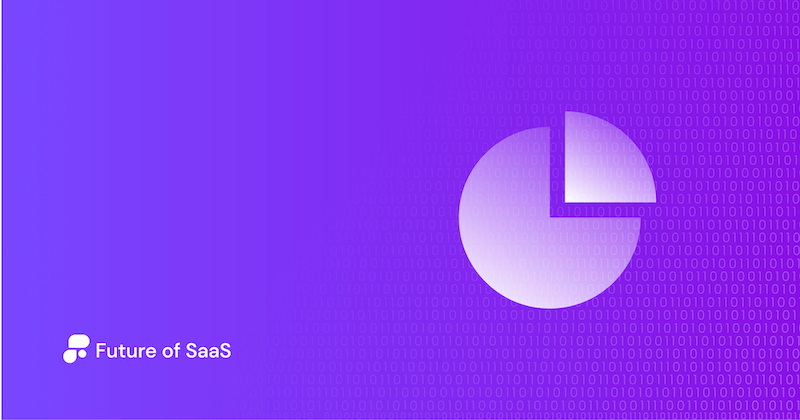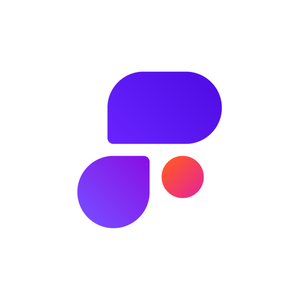When it comes to launching a SaaS product, most orgs are going to be focused on crucial factors such as strategy, app development, market research, etc. All of this is essential, of course, but it’s missing one equally important factor. That’s right. Pricing.
Pricing can make or break your product. Price too low and you risk being crushed by resource costs and and low profit margins. Price too high and you risk stunting your growth by turning away potential customers.
Getting it right is always a delicate balance between knowing your value and being mindful of revenue. Slip up and you can bring the whole thing down.
But don’t worry, with these top SaaS pricing strategies, we got you covered! 💪 In this guide, we’ll be looking at the dos and don’ts for pricing strategy, as well as putting the different types of pricing models under the microscope, weighing up their pros and cons.
Along with some handy insights, we've packed this guide full of blog entries from some of the leading minds in pricing strategy. Let's get started.

Avoid friction: Offer a free trial
When you're first launching your product, you may not have the capital to invest in a sales team to carry out contract negotiations. This doesn’t have to be a negative. When your product is new, word of mouth on your solution won’t have had time to circulate, so you’re going to be reliant on users trying out the product themselves.
To start with, make it super simple: Cut out the product proposals, the negotiations and the proof of concept documents. Go with the free trial route, allow customers to experience the value of your product first-hand and increase the likelihood of turning users into buyers.

Consistency is key
Obviously all SaaS orgs want to scale fast, and it might be tempting to price for maximum revenue. But the fact is, once you’ve established a brand reputation, your customers are going to have a certain idea about your product and its value.
Although it can be reasonable to increase prices once you start to enter into new markets, it’s important to align your product with your established customer base.
A sharp rise in prices can disrupt that established relationship between your customers and your org and can lead to customers comparing your solution with similar offerings in the market.
Steady, consistent prices help to maintain a stable relationship. And the benefit of long-term customer retention can do wonders for your conversion rate.

Always be transparent
Okay, so this might seem obvious, but it’s surprisingly common for SaaS companies to keep their pricing pages in the background while keeping the landing page reserved for product benefits. Make your pricing clear, easily visible, and, above all else, unambiguous.
When signing up with your org, your customers are potentially entering into a long-term relationship with your org. You know the old cliche about relationships: First impressions count. If an org seems to be shifty or underhanded about their pricing, it can make your org seem dishonest.
In modern times, users care about the values of the orgs they engage with and value honesty. A fully transparent pricing strategy will go a long way.

Keep it simple, but offer choice.
Developing add-ons and additional features can be exciting, sure, but don’t let it muddle your pricing strategy. Keep your pricing packages to a minimum and be clear about what the value of each package is. Something like this:
Free - Core set of features with a limited number of seats
Standard – Core set of features with an increased number of seats.
Premium – Unlimited seats, plus additional features and add-ons.
Professional – Unlimited seats, plus advanced features.
The right balance to strike here is one between clarity and choice. Your solution has to appear to offer plenty of potential beyond your basic offering without overwhelming the user.

Make entry cheaper
The simple truth is that it's very difficult to know whether you’ve priced your product correctly until it’s out in the market. But there’s one simple fact that holds true: It’s better to price too cheaply to start with than too expensive.
Your product is still an unknown quantity and you need to ensure that it can achieve its growth potential. Price your customers out of entry and it’s a total non-starter.
Once users have found the value in your product, that’s when they’re going to be curious about upgrading to your premium plans. Once word of mouth has spread and your brand reputation has been established, that’s when you can make the argument for increasing entry-level fees.
Pricing your entry-level package low can massively pay off in the long run.

Approach price increases with caution
Although price increases may be reasonable, especially as your audience grows, they should always be handled delicately.
The solution: be considerate to your customers. Build up to price increases, either through increasing in small increments, giving your customers ample warning about the incoming changes, or you can even allow temporary exceptions for long-standing loyal customers.
If you allow for a brief period where customers pay the same fee that they've been paying up until the price change, you can allow them time for reorganizing their budget.
Some services, such as streaming platforms, even have automated responses that are triggered whenever customers try to churn, offering them a discount on their current package.

Above all else, keep your eye on your customers
Whichever route you decide to take here, it’s essential that you’re always mindful of your Ideal Customer Profile and gear your price changes accordingly. Are your customers likely to be able to budget for this? Do they spend enough time on your product to justify spending more?
This can all be handled by keeping an ear close to the ground when it comes to your customer needs and desires. Even if your spreadsheets and numbers would seem to suggest that a price increase is in order, the decision should always be determined by what your users will accept, not what the numbers demand.
SaaS pricing models
Now that we’ve looked at some basic pricing dos and don’ts, let’s look closer at price tiering. Will it boost or hamper your scaling efforts? Let’s find out. 👇

Flat rate pricing
As far as SaaS pricing models go, this is as bare bones as it gets. A single annual or monthly fee is offered for a single set of features. Although this type of model is becoming vanishingly rare in the ever-expanding world of SaaS, there are significant advantages to it.
Advantages
- It’s super simple. Friction can be a major barrier to customer conversion. And complexity can be a major cause of friction. Customers want to understand what you're offering and how much it costs as quickly as possible. Simplicity aids in this.
- It’s sellable. The more complicated your offers are, the more complicated they are to sell. By keeping your offering to a minimum, it can be easier to focus all of your sales enablement prowess on getting the deal done.
Disadvantages
- Lack of wriggle room. If a customer seems reluctant to take you up on your offer, there’s no other offer that you can fall back on when trying to negotiate.
- Very narrow appeal. A limited offering and inflexible price means that there are many demographics that your offering simply isn’t going to appeal to at all. One of the significant benefits of a SaaS model, in general, is that it allows customers to choose a package that suits their lifestyle. A flat rate denies you that advantage.

Usage-based pricing
Simply put, this charges users based on how often or little they use your service. Depending on what your use case is, this pricing model can charge users based on: How many features they request, how many posts you schedule, (if it’s a social media management platform) or how much data is being used.
Advantages
- Less friction in signing up. Since there are no upfront costs, there's no potential risk for users in signing up. If users don’t find any value in your product, they simply don’t have to use it, and they don’t incur any costs.
- Reduces heavy-user resources. With this type of model, there’s no risk that unpaid users will take up your resource costs without compensating for them. Customers pay for what they use. Simple.
Disadvantages
- Difficult to forecast revenue. If pricing is entirely determined by usage, it’s extremely difficult to make predictions about your overall revenue. As a result of this, it can be very hard to know how to allocate resources and budget.
- Customer costs are a mystery. SaaS orgs have to be able to forecast costs. The cost incurred by customer usage is particularly crucial because it gives you insight into whether the prospects you’re going after are costing you more than you’re gaining. But with a usage-based model, a profitable customer can become an unprofitable one in a relatively short space of time.

Tiered pricing model
This has become the standard model for SaaS orgs. It offers a variety of different user pricing options, ranging from a relatively affordable one with core features to a premium package with more advanced features.
Advantages
- More chance of conversion. The chances are that most of your users are not going to need your advanced features and are going to opt for the basic package. Although this may initially lead to you spending more in customer-related costs, the inevitable growth that this can lead to will eventually compensate for this and hopefully lead to an eventual increase in customers opting for higher priced options too.
- Broader demographic appeal. Different packages suit different lifestyle needs and budgetary requirements. A tiered approach means that more customers can find a pricing package that fits in with their life.
Disadvantages
- Appeal is too broad. If your product offers too many features, you can risk obscuring a clear vision or value prop for your product. A more targeted approach can establish a more clear brand identity, which can go a long way.
- Potentially confusing. If a user spends 10 minutes poring over your various offerings, they might be able to figure out the value of your product. The problem? No one is going to spend five, let alone 10 minutes, looking over your pricing offerings. If signing up takes too long, users are going to abandon your product and likely forget about it.

Per user pricing
In a nutshell, you pay a monthly or annual fee for a user on your team signing up, add another user and the price doubles, add another and it doubles, a third and it trebles, and so and so forth. Got that? Great. Let’s dig into the advantages and disadvantages.
Advantages
- Scaling leads to revenue. There is a direct correlation between the number of users signing up and your increasing revenue at the point of adoption. This means you don’t get ‘heavy use’ customers costing you more than you’re earning. And it’s relatively simple to forecast revenue.
- Simple for customers. In comparison to usage-based pricing models, orgs are able to easily predict how much signing their teams up with you is going to cost. The barrier of uncertainty is toppled.
Disadvantages
- Can potentially limit adoption. It’s pretty much a no-brainer. Many orgs are going to hesitate at the prospect of signing up a team, if it means quadrupling their sign-up costs.
- Higher chance of churn. This leads on from number one. If orgs are only going to sign up a limited number of their team members, it’s going to limit your relationship with that org and lead to a greater chance of churn.
Freemium model
Slack has found success with modern businesses in the freemium model. This is a model that is completely free to use with core functions, only charging for additional features.
It’s typically limited by use-case. For example, you might be able to use it internally to manage your teams, but reaching out to customers might require a more premium package.
Advantages
- Higher adoption rate. The biggest problem Saas companies face is simply getting users to adopt their product. You can’t have paying customers if no one is willing to adopt your product. It really is that simple.
- Higher referral potential. With a much higher potential for rapid growth comes a higher chance of referrals. Additionally, users can more easily sell their friends on a product that they can get a lot of use out of without having to spend a cent.
Disadvantages
- Real risk to revenue. Unless your growth is absolutely exponential, there’s a risk that customer acquisition costs are going to considerably eat into your revenue gain. Freemium models have to get big very fast to start compensating for these losses.
- Devalues your product. If your product is solving a really unique, painful problem, you might be undervaluing it and risk harming your revenue potential.
Final thoughts
Whichever pricing model you decide to go with, what’s most important is that you find the one that matches the use case and value of your product. Pricing is not an afterthought, it’s an integral part of the overall SaaS puzzle and should be treated as such.
Like what you see? Why not check out another of our comprehensive guides right here. 👇




